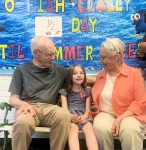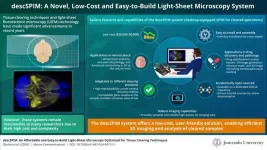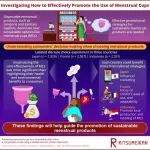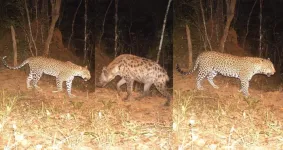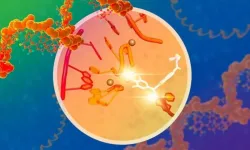Missense Research: Neglected to Date “Most diagnosed SYNGAP1-Related Disorder (SRD) patients have protein truncating variants (PTV) as opposed to missense variants. Virtually all PTVs are assumed to have the same impact at the molecular level, but each missense is treated as a unique case. This is because we just don’t understand what is happening well enough. As a result, the majority of the research, models, and therapies are targeted at PTVs.” explains Mike Graglia, founder of SRF. He continues, “The default setting in industry and academia is that missense variants are a problem to solve in the future. We disagree. Families with missense variants are rightfully concerned that their loved ones may not have timely access to precision medicines currently being developed. The only way to address this is to invest in and support this research through the SynGAP Research Fund 501(c)(3), the leading patient advocacy group working to improve the lives of SRD patients.”
“SRF has been investing in missense research since 2022, when we partnered with Leon & Friends who were early advocates of missense research. This is a critical area of research as it impacts both our diagnosed patient numbers and access to precision medicines.” says Aaron Harding, Director of Critical Operations, Lead for the SYNGAP1 Missense Patients and father of Jaxon (18). He continues, “To date we have funded over $700,000 of missense research and reagents to improve our understanding of missense variants.” (See Table 1 for details on support to date)
About the Donation The Nordmoes realize how costly it is to fund impactful research, so their initial donation of $10,000 is the first step. This will fund the creation of an iPSC or induced Pluripotent Stem Cell with SRF’s partner COMBINEDBrain. The iPSC will then reside in the CB/SRF Biobank, available for industry and academic partners to use in their work to develop better therapies for SYNGAP1 missense patients. This process, which takes approximately nine months, is an important step toward a path to a cure, as these cell lines will be used to facilitate research and evaluate therapies. Beyond this, the family will be reaching out to extended family members, friends, and others encouraging donations to SRF’s Missense Fund (https://Syngap.Fund/MissenseFund), hoping to raise at least $50,000.
According to Suzanne Jones, SRF Board Chair and parent to a missense SYNGAP1 child, “The entire SYNGAP1 missense community will benefit greatly from the Nordmoe family’s establishment of a Missense Fund. Having a means to specify missense donations within the Fund gives these families a meaningful outlet for their own financial contributions.”
Olivia and her family To learn more about Olivia, her parents and the donors, please see this longer article on the SynGAP Research Fund website.
About SYNGAP1-Related Disorder (SRD) SYNGAP1-Related Disorder (ICD-10 F78.A1; ICD-11 LD90.Y) is a rare genetic disorder caused by variants on the SYNGAP1 gene that reduce SynGAP protein levels. SRF has identified over 1,400 patients to date, the number grows weekly. This protein acts as a regulator in the synapses (where neurons communicate with each other). When SynGAP protein levels are too low, we see an increase in excitability in the synapses making it difficult for neurons to communicate effectively. This leads to many neurological issues seen in SynGAP patients.
Symptoms of SYNGAP1 include primarily neurological issues, including autism spectrum disorder, intellectual disability, epilepsy, hypotonia (low muscle tone), gross and fine motor delays, and visual abnormalities such as strabismus (crossed eyes) as well as gastro-intestinal challenges and disordered sleep.
About the SynGAP Research Fund (SRF) The mission of the SynGAP Research Fund (SRF) is to improve the quality of life for SYNGAP1 patients through the research and development of treatments, therapies, and support systems.
SRF was founded in the US in 2018 as a 501(c)(3) US public charity, and families created sister organizations for SRF in the UK in 2020, in Europe (Netherlands) in 2022, and in Latin America (Colombia) in 2023.
Completely family-led, SRF is the largest non-government funder of SynGAP research having committed almost $6 million in grants. The founders cover operational costs, ensuring donations fund science and patient-related programs. SRF’s grant program awards grants to investigators, physician residents, and clinicians interested in studying SYNGAP1. SRF grants are intended to help researchers explore novel ideas and answer open questions related to the clinical aspects of and therapies for SRD.
SRF is a member of FasterCures, COMBINEDbrain, Global Genes Foundation Alliance, Everylife Foundation Community Congress, Epilepsies Action Network, Personalized Medicine Coalition, Rare Epilepsy Network, Epilepsy Leadership Council, Alliance for Genetic Etiologies in Neurodevelopmental Disorders and Autism (AGENDA), California Action Link for Rare Diseases, American Brain Coalition, Genetic Alliance UK, Rare Disease UK, Syndromes Without a Name (SWAN UK), Jumpstart Program, Patient Worthy, Autism Brain Net, Innovation and Value Initiative, Rare Disease Diversity Coalition, Cambridge Rare Disease Network, Breaking Down Barriers, Rare-X, Mencap & IndoUSRare.
For more on SRF, visit curesyngap1.org or follow @cureSYNGAP1 on LinkedIn, YouTube, Instagram, Facebook, TikTok, or X.
Table 1: Summary of SRF Grantmaking specifically for missense variant related research to date. Grant
$
Courtney
$200,000
Courtney 2
$110,000
Postilla
$100,000
Carvill via MDBR
$65,000
InVivo Biosystems
$10,000
Missense Line 1 ipsc
$11,000
Missense Line 2 ipsc
$11,000
Missense Line 3 ipsc
$11,000
RareBase Screen ML 1
$105,000
RareBase Screen ML 2
$105,000
$728,000
END
